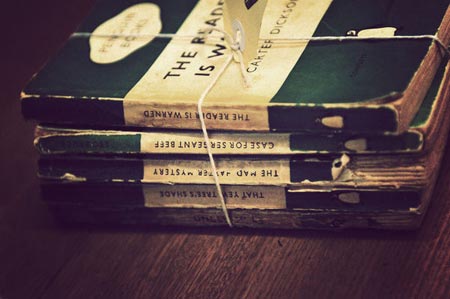
Ever how to interpret the condition, edition, and other terms included in the description of a book for sale? Here we’ll unravel the mystery.
Book Condition Terms
Very fine is a flawless copy, perfect in every way and probably never read. These are few and far between. Sometimes abbreviated “VF.”
Fine is a copy with no real defects, but is not as pristine as a very fine copy. It may have been read, but with care. Any flaw, such as a bumped corner, a slightly sunned spine, rubbing, slight soiling, or a very tiny tear, will be noted. (Example: “slightly rubbed, else fine.”). Sometimes abbreviated “F.”
Very Good is a copy with one or more small defects. It may be rubbed, have a small tear, a dinged corner, or other minor defect. Defects will be noted in our description. Most of our books are Very Good or better. Abbreviated “VG.”
Good denotes a copy with some obvious, larger flaws. There may be a larger tear in the dustjacket, a large gift inscription, be very sunned, have a creased spine, or have other defects. Many ex-library books fall into this category. Makes a good reading copy. All defects will be noted.
Poor/Fair indicates a copy with very serious defects. It may actually have some loose pages, underlining or highlighting, or be very soiled. These books are generally below the standards of Empty Mirror books and we do not, except in very unusual circumstances, sell books in Poor condition.
Learn more about factors affecting book condition…
Types of Book Editions
Edition / Printing: Edition refers to the copies of a book printed from the same setting of type. An edition may go through several press runs, or printings.
First edition: The common meaning of this term is the first printing of the first edition of a book. Though technically the “first edition” of a book may go through additional printings, book collectors consider only the first printing of the first edition to be a true first edition.
Second (or later) edition: This refers to a book which has been, revised, updated, or for which the type has been reset from that of the first edition.
First thus: The first edition published in the present form. Often used to denote a book that was published previously by a different publisher.
Limited edition: The book’s publication was limited to a certain number of copies. The statement of how many copies were published often appears on the colophon page, and occasionally elsewhere. Often each copy of a limited edition will be numbered. Some limited editions are also signed by the author.
Identifying a First Edition
We’ve devoted a whole page to this topic. See “How to identify a first edition.”
Book Bindings
Hard cover is self-explanatory. The actual covers are sometimes referred to as “boards,” which may be covered in paper, cloth, or occasionally leather.
Wrappers refers to a paper binding. The terms soft cover, paperback, and wraps also refer to a paper binding.
We (& many other booksellers) use ‘wrappers’ to refer to any paperback book.
Mass market paperback is the format in which most popular fiction is published. The new Grisham, Grafton, or Cornwell novel you bought to read on your vacation is one of these.
Trade paperbacks are larger in size, often about 6 x 8 inches or so. Literary fiction is often published in this format. The last paperback poetry book you purchased is almost certainly a trade paperback.
Library binding. Lending libraries sometimes re-bind books into a heavier, more durable binding (often buckram cloth-covered boards) which will stand up the heavy use to which library books are often subjected. The author, title & call number is often printed or embossed onto the spine & sometimes the cover. Collectors usually avoid library-bindings, since the book has been drastically altered.
Signed Books
Signed means signed by the author, or occasionally by the editor or illustrator.
Inscribed (sometimes referred to as a presentation copy) means the author has signed the book to a particular person, and may have written some additional lines.
Dedication copy indicates the author has inscribed the book to the person to which it was dedicated.
An association copy is one which has been inscribed by the author to another author, a well-known person, or someone else associated with the author. It can also be a copy (not necessarily signed) which was owned by another author, for instance, Allen Ginsberg’s copy of “On the Road.”
Gift inscription simply means that someone, not the author, has written something on the book before giving it to someone else as a gift. For example: “To Darla, Happy 2-week anniversary of our first date! These poems are as beautiful as you! Love, Steve.”
Holograph means something that is written in the author’s handwriting.
See photos, & learn more about author signatures & their value…
Book Terms Glossary
Just click the links to full-sized photo examples following many of the descriptions.
Advanced Reading Copy (ARC) or Uncorrected Proof
 Advanced Reading Copies are sent out to booksellers and reviewers in advance of the book’s publication, in order to drive sales and generate reviews.
Advanced Reading Copies are sent out to booksellers and reviewers in advance of the book’s publication, in order to drive sales and generate reviews.
They’re often bound either in laminated paper covers featuring a design similar to that of the upcoming book, or in plain cardstock covers printed with publication details.

Often the published book differs from the proof or ARC – corrections and revisions may be made. The examples above are uncorrected proofs.
Bio:
 A biographical sketch of an author, commonly found on the rear flap of a dustjacket, on the back cover, and in journals or anthologies, in a section in the back of the book. Bios often include details of the author’s life, and mentions of past publications and current projects. Sometimes an author photo is included.
A biographical sketch of an author, commonly found on the rear flap of a dustjacket, on the back cover, and in journals or anthologies, in a section in the back of the book. Bios often include details of the author’s life, and mentions of past publications and current projects. Sometimes an author photo is included.
Blurb:
A short descriptive paragraph on a book, usually on the dustjacket’s flap, or on the back cover.
Boards:
The covers of a hardcover book. They are usually cardboard, which is then covered in cloth or paper, and sometimes leather or another material. For example, you may see a book described as being bound in “cloth-covered boards.”
bookplate:
A printed label (usually about 3×4 inches) which is adhered to a book. They are of two types: ownership and author signature.
Most bookplates are intended to establish ownership, with the owner’s name either printed or written upon them. They are commonly sold at bookstores but may also be custom-made. A bookplate often detracts somewhat from a book’s value, but there are exceptions.
 The second type of bookplate is signed by the author. Sometimes, instead of signing a book directly, an author will sign bookplates, which the publisher affixes to a book. These signatures are usually considered less desirable than a signature written directly on the book. A book with a signed bookplate will usually command a lesser price than a book that’s been signed directly.
The second type of bookplate is signed by the author. Sometimes, instead of signing a book directly, an author will sign bookplates, which the publisher affixes to a book. These signatures are usually considered less desirable than a signature written directly on the book. A book with a signed bookplate will usually command a lesser price than a book that’s been signed directly.
Some people collect bookplates (either loose or attached to books), often concentrating on those owned by notable people, or by designed by famous artists.
Broadside:
 It may be as simple as a photocopy, but may be offset or letterpress printed. A broadside can be as small as business-card size, or as large as a poster. Two common sizes are 5.5″ x 8.5″ and 8.5″ x 11.” Broadsides are often signed and almost always limited.
It may be as simple as a photocopy, but may be offset or letterpress printed. A broadside can be as small as business-card size, or as large as a poster. Two common sizes are 5.5″ x 8.5″ and 8.5″ x 11.” Broadsides are often signed and almost always limited.
Buckram:
A very heavy, durable woven cloth, usually made of cotton or linen, used to bind library books. It’s often impregnated with a type of glue or other substance which serves as a stiffener and protective coating. Buckram is also sometimes often found on non-library books (especially antique ones).
Bumped:
Usually refers to the corners of a book, which have been creased, bent, or rounded, often due to the book having been bumped or dropped.
Chip:
 As the name implies, a small piece missing from the edge of a dustjacket, or occasionally, a paperback book.
As the name implies, a small piece missing from the edge of a dustjacket, or occasionally, a paperback book.
The example at left shows an example of a dustjacket with large chip at top.
Colophon:
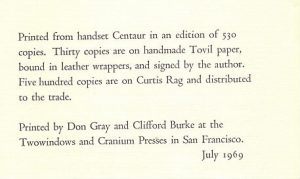 A notation in the back of limited, small-press, and some other books indicating publishing details.
A notation in the back of limited, small-press, and some other books indicating publishing details.
Often this information includes the number of books printed, where it was published, the paper and typeface used, and by whom it was printed and bound.
On signed limited editions, you will often find the book’s number and author’s signature on the colophon page.
Deckle Edge:
The edges of a sheet of handmade paper are naturally rough and rather feathery. This is called a deckle edge.
Sometimes the deckle is trimmed away so the edge of the paper is very straight (like the edges of most papers); but it’s often retained for aesthetic reasons. A simulated deckle edge is sometimes found on machine-made paper.
Definitive Edition:
This edition, after careful study of the original manuscript, is issued as the most accurate / authoritative / edition to date.
Dustjacket:
 The paper that wraps around the covers of a hardcover book. Sometimes referred to as a “dustwrapper,” it is not to be confused with “wrappers” which means the covers of a softcover book.
The paper that wraps around the covers of a hardcover book. Sometimes referred to as a “dustwrapper,” it is not to be confused with “wrappers” which means the covers of a softcover book.
Dustjackets first appeared late in the 19th century but were not commonly used until early in the 20th century. Back then, they were often discarded by the purchaser, so early dustjackets are often difficult to find.
For collectors, the presence of a dustjacket (if it was issued with one) – and its condition – is very important & has a substantial bearing on the value of a book.
Edgewear:
 The edges of the cover are a little worn. Most commonly found where the spine and cover meet, but also sometimes found on the cover’s other three edges. Edgewear often happens when a paperback book is subjected to heavy use or repeated contact with other books. But it can also occur on hardcovers. The book at left shows edgewear adjacent to the spine.
The edges of the cover are a little worn. Most commonly found where the spine and cover meet, but also sometimes found on the cover’s other three edges. Edgewear often happens when a paperback book is subjected to heavy use or repeated contact with other books. But it can also occur on hardcovers. The book at left shows edgewear adjacent to the spine.
Endpaper:
Endpapers are found at the very front and back of the book. The paper is often colored; sometimes it’s decorated with a pattern, or even a map. The pastedown is the endpaper glued inside the cover. The free endpaper, is opposite the front pastedown, and is “free,” that is, like a page. Sometimes the front free endpaper is abbreviated f.f.e.p..
Errata Slip:
An errata slip is a small piece of paper laid into a book detailing printing errors that were made. These errors may include typos, misplaced text, and pages out of order or similar problems.
Ex-Library:
The book once belonged to a lending library. Ex-library books are generally undesirable, due to the fact that they have usually have been stamped, taped, glued, and subjected to other indignities, such as the application of a card pocket. In addition, it may have been damaged by careless library patrons. Occasionally one may come by an ex-library book which is minimally marked, these are lucky finds.
Ex-library books can make good reading copies, but, with a few exceptions, are not usually found on the shelves of most serious book collectors. (However, they can be good place-holders until a better copy is found.) That said, there are some books that are so scarce that an ex-library copy may be acceptable. Some books’ first editions were also sold almost entirely to libraries, making it difficult for the first-edition collector to obtain a non-ex-library copy.
Flap:
The part of the dustjacket that wraps around the inside of the book’s covers and usually includes a description of the book’s contents and perhaps a short biographical statement about the author.
Foxing:
In a nutshell, a foxed book’s pages have some spotting, ranging from sort of a beige color to a rusty brown (like a fox’s footprints, or maybe its reddish coat). Sometimes foxed spots are referred to as “age spots.” The causes of foxing include temperature & humidity changes (don’t store your books in damp or unheated places!), and impurities within the paper (high acidity – most common in modern books with cheap paper, or iron or copper, commonly found in 19th-century & older books). There may be other causes as well, such as fungus or other microorganisms. The reason for foxing in a particular book is often difficult to discern.
Foxing is very common in antique books (due to the paper used) and can certainly be found in contemporary books as well.
A book conservator/archivist can sometimes remove foxing, but it’s a very difficult & expensive process.
As far as how it affects value, well, it just depends on how easy it is to find an unfoxed copy. Some very old books may be difficult to find in unfoxed condition; in that case, value will not be greatly affected. Modern books are devalued by foxing to a greater degree because they are more readily available in fine condition.
Hinges:
The hinge is the interior or exterior point on a book where the cover meets the spine. Inside, it’s where the flyleaf (front free endpaper) meets the pastedown (the endpaper which is pasted to the inside cover of the book).
The hinges are a book’s weakest point so prone to problems, especially if the book is handled or shelved carelessly. Loose or broken hinges are very common on old books.
“Hinges starting” could mean one of two things:
- The book’s hinges are beginning to separate from each other via a tear. (the flyleaf separating from the pastedown). If not just “starting” the hinges are described as “broken.”
- The book’s hinges are beginning to loosen. The endpapers have come partially unglued from the covers at the hinge. Sometimes this is described as “shaken hinges.” Loose hinges can lead to broken hinges.
If the book is of some worth the value will probably be enhanced by repair, provided it’s well done. (Poorly done repairs can reduce the value.) It may or may not be worth making such a repair on a common book. Any repairs must be disclosed in the event you decide to sell the book.
Hinges can be repaired fairly easily at home (usually with archival glue or tape), but if the book is valuable it’s best to have a professional do it. If you’re tempted to do it yourself, google “book hinge repair” or see
Loose Book Hinge Repair instructions.
To prevent loose hinges, pay careful attention to how you handle and shelve your books. Never pick a book up by one cover, or bend the covers back too far. Always shelve books vertically (not on their sides, or spine-up), so that they are neither packed too tight on the shelf nor leaning. Books should be shelved with other books of similar size; a large book surrounded by small books doesn’t have the proper support & may develop loose hinges.
Laid In:
A paper item (often a photograph, letter, press release, or postcard) which is loose inside the book. See also tipped in.
Memorial Edition, or Anniversary Edition:
An edition published to commemorate some milestone – perhaps the 25th, 50th, or centennial (or other) anniversary of the first edition, or the author’s birth or death.
Price-Clipped:

The price has been cut off the dustjacket. This is often done before giving a book as a gift.
A price-clipped dustjacket lowers the value of the book somewhat, as intact dustjackets are much more desired by collectors.
Rag Paper:
Rag paper is a type of paper which is made of cotton fiber. It’s typically stronger than paper made from wood pulp or other plant fibers, and is also more expensive. It can contain anywhere from 25-100% rag pulp (the rest would be from other plant fibers).
Remainder:

A mark applied to a book in order to designate it as a remainder, a book which has been sold to a bookstore or wholesaler at a reduced price, because it is out of print.
The mark is often made by an ink marker on the top or bottom edge of the book. Occasionally the mark may be applied elsewhere. A few publishers use a rubber stamp or other designation instead of a marker.
A remainder mark will lower the value of the book somewhat; how much just depends on the book in question. A small, unobtrusive remainder mark may have less of an impact on value than a large, unsightly slash.
Rubbed:
The covers of the book show some wear, causing some dullness. Heavy rubbing can result in the color of the paper underneath the ink (usually white) to show through. The covers of the book at left are rubbed, especially near the top.
Sunned / Sunning:
Another term for faded. Exposure to light will fade colors, therefore books should be kept away from sunlight & other strong lights. Though sunning can affect any part of the book, the spine is most often affected, as it is the part most exposed to light on a bookshelf. The top edge is also often subject to sunning, especially when books are shelved next to those smaller in size.
Tipped In:

An item that has been tipped in a book has been physically attached to the book, most commonly with glue. Often photos and similar items are tipped in. Very occasionally a misprinted page will be replaced with a tipped in corrected page.The photo linked below was tipped in by gluing its top edge onto the book.
See also laid in.
Toned:
Toned means that the paper has darkened somewhat. Toning tends to occur most at page edges. It is often due to sun/light exposure, or acidic paper.
Uncut Edges
In the past, books were commonly sold with the pages left uncut (still joined together at edges), requiring the purchaser to do it herself after purchasing the book. (These days, the vast majority of book edges are cut by machine, thereby separating the pages automatically.)
If you’d like to cut the edges (separate the pages) the easiest way to do it is to use the edge of an ordinary playing card to carefully slice the page edges apart. The playing card is dull enough so as not to quickly slice through the edges (dangerous to you & book) but still sharp enough to make a nice clean cut.
Whether you separate the pages in your book is up to you. It does not usually have an effect on book value (because books are difficult to read with uncut edges). So, if you’d like to separate them, go ahead & do so – and enjoy your book.
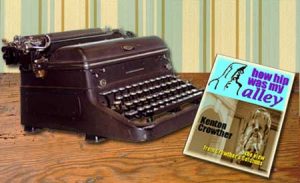
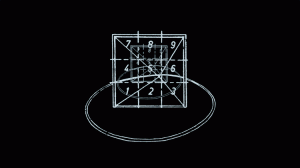
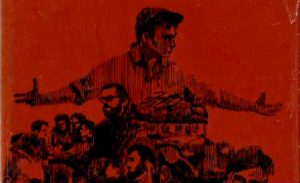

@amancalledprak says
@emslj I found this list of bookselling terms earlier. It is profoundly comforting to me. https://t.co/5ajTeLFncM #prize #proud